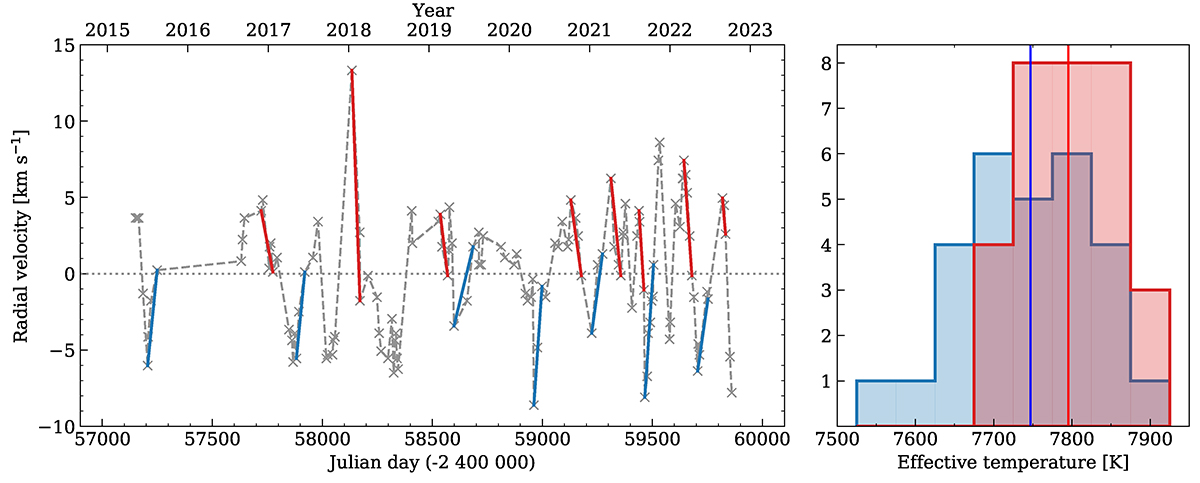Fig. 14.

Download original image
Pulsational behaviour of V509 Cas. Left: radial velocity time series of Si II. As a zero or ‘equilibrium’ velocity, we have chosen the mean radial velocity of the star at −60.7 km s−1 (grey horizontal line). We have marked the epochs, when the stellar disc is at its contraction state (red) and when the star is in an expanding state (blue). We calculated the mean effective temperature for each state. Right: the distribution of mean effective temperatures can be seen on the histogram. During the star’s expansion state, the temperatures are on average slightly lower in contrast to the contraction states, when the temperatures are slightly higher.
Current usage metrics show cumulative count of Article Views (full-text article views including HTML views, PDF and ePub downloads, according to the available data) and Abstracts Views on Vision4Press platform.
Data correspond to usage on the plateform after 2015. The current usage metrics is available 48-96 hours after online publication and is updated daily on week days.
Initial download of the metrics may take a while.


